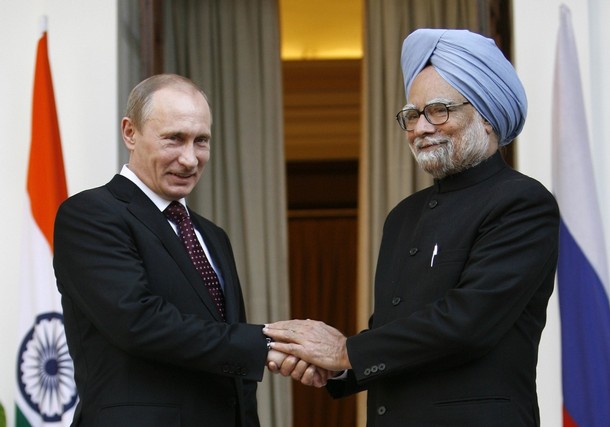Putin has suggested that Russia’s proposal goes beyond what is on offer from the US. It is interesting to recall that, in the mid-1960s, both the US and the USSR engaged in (futile) discussions with India on whether there were security assurances acceptable to both sides that would persuade India to join the NPT.
This initiative reflects the enduring great power calculations that first became apparent during the Cold War. When the US was in the market for allies in the northern Indian Ocean in the early 1950’s to support its strategy of containment of the USSR, it could not get past India’s stout commitment to non-alignment. Washington opted to engage Pakistan instead but endeavoured to keep the channels to India open to minimise the risk that New Delhi would be tempted to lean toward Moscow. US confidence in Pakistan as an ally in the anti-communist cause had collapsed by the early 1960s as Pakistan confirmed that its overriding concern was India not the USSR. American concerns about Pakistan extended to the belief that it had entered into secret understandings with China (with whom Washington still had rather poisonous relations).
The China-India border war in 1962 accelerated the exposure of the growing bond between China and Pakistan but also provided Washington with a sniff of a breach in India’s non-aligned defences. The PLA routed India’s ground forces and New Delhi issued an urgent request for both immediate and direct military assistance as well as support for a significant rearmament program. Washington responded with alacrity, despite being embroiled simultaneously in what later became known as the Cuban Missile Crisis. But India declined to regard its urgent request, and America’s fulsome response, as qualifying its non-alignment and the US-India relationship reverted to cool and distant. The China-Pakistan connection continued to flourish while India, in the context of the stresses associated with the third Indo-Pakistani war in 1971, did compromise its non-alignment but in favour of the USSR rather than the US. So Washington found itself estranged from both India and Pakistan while China and the USSR lined up on opposite sides of the South Asian equation.
Today, some two decades after the end of the Cold War, this great power manoeuvring has lost some of its sharp edges but the fundamentals are pretty constant. The Bush administration’s big push on India (driven more in geostrategic terms by China than, as in the past, by Russia) has provoked countervailing moves by both Moscow and Beijing. Neither wants to see the US have a free hand in shaping India’s future orientation but neither are they indifferent as to which of them has more influence in New Delhi. China and Russia have reconciled and are cooperating closely (though perhaps not comfortably) in central Asia through the Shanghai Cooperation Organisation. Russia now has an important arms supply relationship with both India and China and experts debate whether the sophistication and capability of the equipment it is prepared to share with each partner reflects a familiar or new order of preference.
Beijing found it particular hard to extend its charm offensive to India (and Japan) but the US-India deal elicited a strong drive to get past its inhibitions (not to mention the long Indian memories of its nuclear relationship with Pakistan). China-India trade and investment are now booming but the deep strategic reservations they have about one another remain only too apparent. Russia has the advantage of a positive history as a reliable arms supplier and is clearly leveraging this status with the new nuclear deal.
The Australian government’s recent decision to conclude a uranium supply arrangement with Russia (against the advice of the Joint Standing Committee on Treaties) will inescapably facilitate whatever arrangements Russia confirms with India. It can only be a matter of time before opponents of the Australia-Russia deal begin to ask questions about how it might play into Russia’s wider nuclear dealings, not least with India. For its part, New Delhi is presumably deeply content that the US, Russia and China all want stronger relations, even if the task of managing their respective expectations could become quite delicate.
Ron Huisken is Senior Fellow, Strategic & Defence Studies Centre at the Australian National University.

